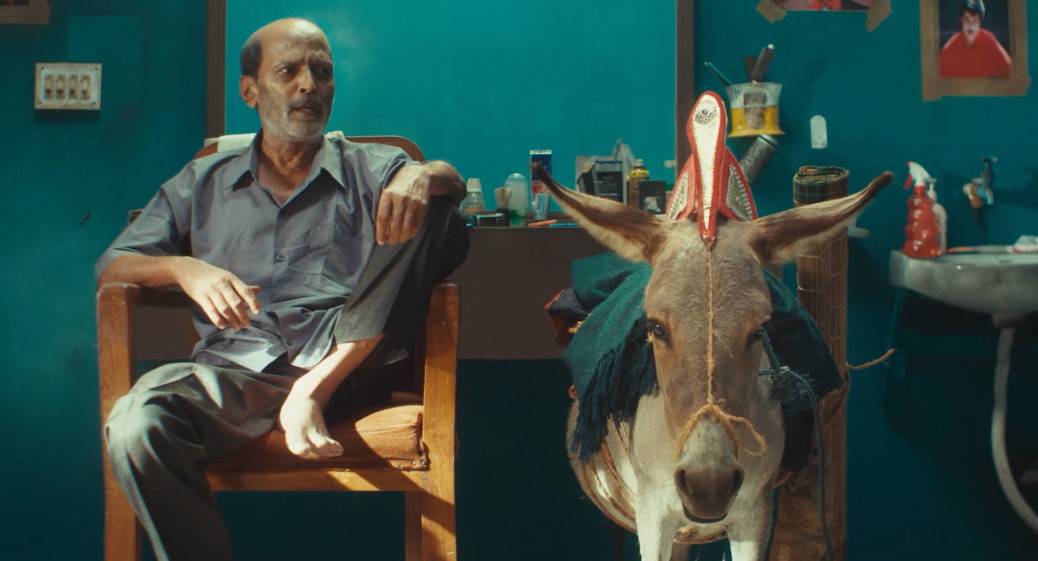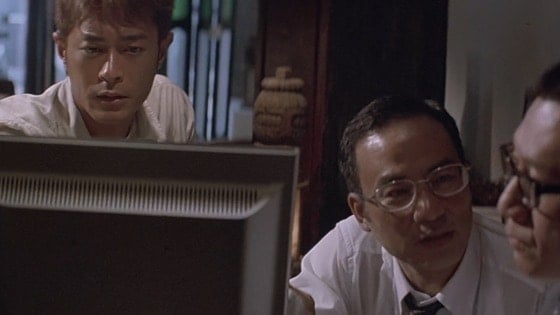“I visited your village. It was such a pleasant time.”
(from a Karen song)
One of the most important themes within Thai cinema is the balance between humans and nature. Even though the waves of global politics and economics have done their part in changing the face of the country, nature still holds a promise or even a secret to those willing to accept it as part of their lives rather than exploit its resources. In the cinema of directors such as Apichatpong Weerasethakul, nature, religion and mysticism are closely related, intertwined even though their connection is never truly revealed, and endless sources of beauty and spiritual harmony.
While his previous feature explored the border conflicts with Cambodia and internal turmoils of the past, Thai director Nontawat Numbenchapol's images in “Boundary” already indicated a close link between the individual and the environment. Following the case of lead pollution of a river nearby a Karen village in western Thailand, his new project “By the River” offers an interesting insight into an ecological catastrophe leading back 15 years. Even though the film would not be subject to a (temporary) ban as “Boundary”, the subject matter is no less provocative, as Numbenchapol explains his intention of creating awareness for an issue which should be everyone's interest.

Ultimately, the “immeasurable” economic damage of the lead contamination of the river has lasting effects on the population of the village. Even though they have been promised monetary compensation, the pollution of the river as well as the various health risks from blood poisoning to blindness, will probably never fully cease.
Apart from his interest in the case of the Karen village, “By the River” is also an advancement on a technical and artistic level for the director. In an interview Numbenchapol states how he felt more confident with the medium as well as having the ability to combine it with his skills as a photographer. After having worked three years on “Boundary”, one can see the parallels between the two films, but also how Numbenchapol has evolved artistically.
Similar to the first film, the link between people and the environment is highlighted in each of the shots, perhaps even more so given the film's subject matter. The villagers, who have lived in the area for more than four centuries, are in sync with their surroundings as the harmonic framing, the use of natural lighting as well as Katenan Junimathorn's atmospheric score suggests. As each image fades out, the film establishes a slow rhythm, much like the repeated motif of water suggests.
However, the idea of harmony is quickly thwarted. As the light dims and the information about the water contamination become apparent, the concepts of balance and danger become fuzzy. While information is given about the health risks, the sicknesses of the village elders and the lead poisoning in the blood of the villagers, Numbenchapol seems to question these concepts he has established in the beginning. Paradoxically, whereas harmony is at the core of the nation, its beliefs and its people, it is human inaction and ignorance which has caused a severe violation to this idea.
At the same time, and again similar to his last feature, the eye of the camera never judges, but approaches. Even though the use of subtitles may not be as neutral at times, especially when the director poses provocative questions to the viewer, the nature of the images remains without direct judgment. Interestingly, as for example, reviewer Clarence Tsui points out, even with the information about the contamination presented to the viewer, the depiction of village life remains strangely poetic and beautiful. Perhaps, one might think, it is something one cannot escape from, least of all the Karen villagers who will have to keep on living with the imperfect harmony, the sickness and the violation after all.

“By the River” is a film about the disruption of harmony, about the link between people and the environment they live in. Even though one might expect otherwise, Numbenchapol's feature mostly sticks to a neutral, poetic tone in his second documentary. Maybe the idea of harmony is not so much violated, but a concept to aim at, something to re-establish. In the end, the reward will be a benefit to us all, it is just a matter of questioning ourselves how much we are willing to do to re-create our link to nature.
Sources:
1) Tsui, Clarence (2013) By the River (Sai Nam Tid Shoer): Film Review
https://www.hollywoodreporter.com/review/by-river-sai-nam-tid-656833, last accessed on: 08/18/2018
2) Nontawat, By the River, in Locarno (2013)
http://thaifilmjournal.blogspot.com/2013/07/nontawat-by-river-in-locarno.html, last accessed on: 08/18/2018
3) Panyalimpanun, Thitipol (2014) Nontawat Numbenchapol on the haunting truth behind his new feature documentary, By the River
https://bk.asia-city.com/movies/news/by-the-river-director-nontawat-numbenchapol-klity-village-contaminated, last accessed on: 08/18/2018















